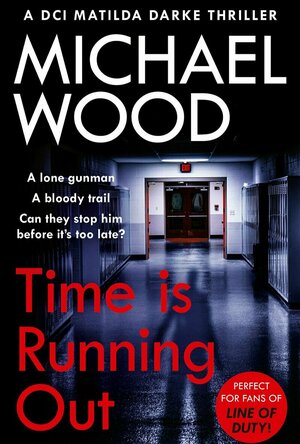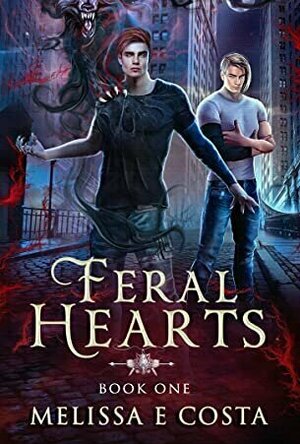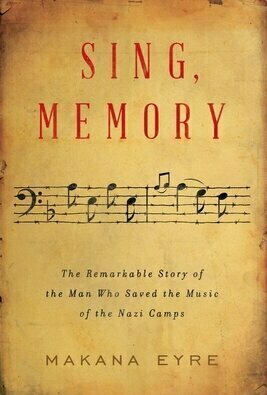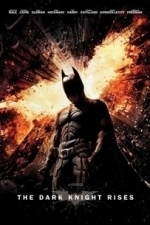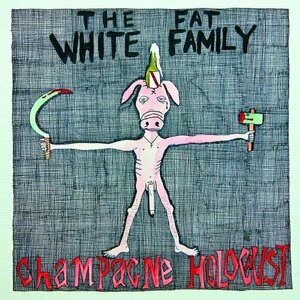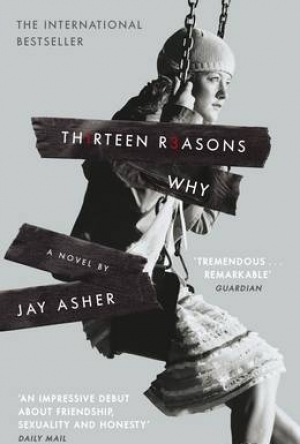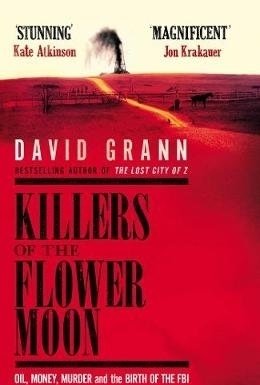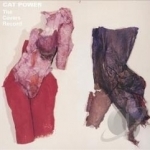Search
Search results
Hazel (2934 KP) rated Time is Running Out (DCI Matilda Darke #7) in Books
Sep 20, 2021
Oh ... my ... word!!! One of the best books I have read this year without a doubt.
What an absolute cracker - totally riveting, a nail-biter and an emotional roller-coaster that had me well and truly hooked and taking flexi time off work so I could start reading earlier. I would say you don't have to have read any of the previous in the series to appreciate this but it does help to understand the main characters but it's not essential.
A mass murderer is on the loose and no one is safe and when I say no one, I mean it ... no one is spared. The pace is relentless, the plot scarily plausible and the characters are just fantastic.
It's chock full of action, violence and suspense from start to finish. I was on pins wondering who was next and went from feeling anger to dread to actual tears. I know, I know, they aren't real people but Michael Wood writes them so well that you really get attached so when something horrific happens to them and you feel the impact it has on those around them, you can't help but get drawn in so yes, I shed a few tears.
I had to close my kindle several times to catch my breath and take 5 minutes to compose myself several times whilst reading and would advise that you don't read this in a public place unless you're not bothered about showing a whole gamut of emotions to strangers!
Highly recommended but not to those who are of a nervous disposition or who don't like multiple scenes of peril and murder ... you have been warned!
Many, many thanks to HarperCollins UK / One More Chapter and NetGalley for my copy in return for an honest, unbiased and unedited review.
What an absolute cracker - totally riveting, a nail-biter and an emotional roller-coaster that had me well and truly hooked and taking flexi time off work so I could start reading earlier. I would say you don't have to have read any of the previous in the series to appreciate this but it does help to understand the main characters but it's not essential.
A mass murderer is on the loose and no one is safe and when I say no one, I mean it ... no one is spared. The pace is relentless, the plot scarily plausible and the characters are just fantastic.
It's chock full of action, violence and suspense from start to finish. I was on pins wondering who was next and went from feeling anger to dread to actual tears. I know, I know, they aren't real people but Michael Wood writes them so well that you really get attached so when something horrific happens to them and you feel the impact it has on those around them, you can't help but get drawn in so yes, I shed a few tears.
I had to close my kindle several times to catch my breath and take 5 minutes to compose myself several times whilst reading and would advise that you don't read this in a public place unless you're not bothered about showing a whole gamut of emotions to strangers!
Highly recommended but not to those who are of a nervous disposition or who don't like multiple scenes of peril and murder ... you have been warned!
Many, many thanks to HarperCollins UK / One More Chapter and NetGalley for my copy in return for an honest, unbiased and unedited review.
Merissa (13535 KP) rated Feral Hearts (Feral Hearts #1) in Books
Aug 26, 2021 (Updated Jul 17, 2023)
FERAL HEARTS is the first book in a trilogy of the same name. The story will conclude in the third book so don't expect even a HFN at the end of book one.
Welcome to the world of miasma and soul battles; where the shifters who live here are unlike those you've read about before. It is a raw, sometimes brutal, world where hierarchy and tradition still rule. Alex is the Alpha's son, an alpha in his own right, but he doesn't fit the usual mould. He is sweet and caring, and more likely to try to help, rather than throw his weight around. He is gay and in love with his best friend, Talon. Everyone thinks Talon is an omega, but he has a secret to hide, something not even Alex knows. Talon is also straight, but not as much as he might think.
This is an interesting world that seems both horrible and fascinating. My heart broke for Alex. He is really struggling with his soul battle, but it had just become VERY interesting toward the end, so I can't wait to see what happens next! And Talon, bless him. There is more to this wolf than people see. I can't wait for the reactions when word gets out that he isn't an omega. Those poor omegas!
I was thoroughly engrossed by this story, so completely different from any other. I really did not want the story to end. I will have to (im)patiently wait for books two and three. I want more!
Definitely recommended by me.
** same worded review will appear elsewhere **
* A copy of this book was provided to me with no requirements for a review. I voluntarily read this book, and the comments here are my honest opinion. *
Merissa
Archaeolibrarian - I Dig Good Books!
Aug 26, 2021
Welcome to the world of miasma and soul battles; where the shifters who live here are unlike those you've read about before. It is a raw, sometimes brutal, world where hierarchy and tradition still rule. Alex is the Alpha's son, an alpha in his own right, but he doesn't fit the usual mould. He is sweet and caring, and more likely to try to help, rather than throw his weight around. He is gay and in love with his best friend, Talon. Everyone thinks Talon is an omega, but he has a secret to hide, something not even Alex knows. Talon is also straight, but not as much as he might think.
This is an interesting world that seems both horrible and fascinating. My heart broke for Alex. He is really struggling with his soul battle, but it had just become VERY interesting toward the end, so I can't wait to see what happens next! And Talon, bless him. There is more to this wolf than people see. I can't wait for the reactions when word gets out that he isn't an omega. Those poor omegas!
I was thoroughly engrossed by this story, so completely different from any other. I really did not want the story to end. I will have to (im)patiently wait for books two and three. I want more!
Definitely recommended by me.
** same worded review will appear elsewhere **
* A copy of this book was provided to me with no requirements for a review. I voluntarily read this book, and the comments here are my honest opinion. *
Merissa
Archaeolibrarian - I Dig Good Books!
Aug 26, 2021
Hazel (2934 KP) rated Sing, Memory in Books
May 21, 2023
I have read a few books about the Holocaust but Sing, Memory is something quite different.
Focussing on the life of Aleksander Kulisiewicz, a non-Jewish Pole, this tells the story of his life before, during and after World War 2. He was imprisoned in the notorious concentration camp Sachsenhausen and paints a disturbing and vivid picture of the horrors he and other prisoners had to endure from being forced to take part in 'sport', to back-breaking work and endless hours of roll call.
In Sachsenhausen, music and singing were forbidden unless used as a form of punishment however, this didn't stop a secret choir being formed and led by conductor Rosebery d’Arguto, a Polish Jew. Aleksander became friends with Rosebery and as a result of Aleksander's amazing ability to memorise songs, Rosebery asked him to memorise his songs and ensure they are shared with the world after the war.
This became Aleksander's mission - to meticulously memorise songs from all the camp inmates and ensure that he survived so they would not be forgotten. After 6 long years of captivity, Aleksander was free however, his promise to those that did not survive was to become his life's work but also an obsession which, along with the horrendous experiences he endured, affected him and those around him deeply.
Sing, Memory is a detailed story written from meticulous research undertaken by the author with the help of a lot of other people and is a remarkable story of one man's mission to ensure a part of history is told and not forgotten.
Thank you to W.W. Norton & Company and NetGalley for enabling me to read and share my thoughts of Sing, Memory.
Focussing on the life of Aleksander Kulisiewicz, a non-Jewish Pole, this tells the story of his life before, during and after World War 2. He was imprisoned in the notorious concentration camp Sachsenhausen and paints a disturbing and vivid picture of the horrors he and other prisoners had to endure from being forced to take part in 'sport', to back-breaking work and endless hours of roll call.
In Sachsenhausen, music and singing were forbidden unless used as a form of punishment however, this didn't stop a secret choir being formed and led by conductor Rosebery d’Arguto, a Polish Jew. Aleksander became friends with Rosebery and as a result of Aleksander's amazing ability to memorise songs, Rosebery asked him to memorise his songs and ensure they are shared with the world after the war.
This became Aleksander's mission - to meticulously memorise songs from all the camp inmates and ensure that he survived so they would not be forgotten. After 6 long years of captivity, Aleksander was free however, his promise to those that did not survive was to become his life's work but also an obsession which, along with the horrendous experiences he endured, affected him and those around him deeply.
Sing, Memory is a detailed story written from meticulous research undertaken by the author with the help of a lot of other people and is a remarkable story of one man's mission to ensure a part of history is told and not forgotten.
Thank you to W.W. Norton & Company and NetGalley for enabling me to read and share my thoughts of Sing, Memory.
Gareth von Kallenbach (980 KP) rated The Dark Knight Rises (2012) in Movies
Aug 7, 2019
Christian Bale reprises his role as Bruce Wayne/Batman in the final installment of Christopher Nolan’s Batman trilogy, The Dark Knight Rises,and is forced to come face to face with new villains once again. This time it is the terrorist leader Bane (Tom Hardy) and cat burglar, Selina Kyle (Anne Hathaway).
In the previous movie Batman had to combat the famed Joker who caused havoc in the city of Gotham. Joker convinced Harvey Dent to seek revenge against Batman and those responsible for the death of his lover, Rachel Dawes. Dent decides to use his lucky coin to decide the fate of those he assumes are responsible, Commissioner Gordon (Gary Oldman) and his family being just a few of the people captured within Dent’s grip of revenge. While Batman saved the life of Gordon’s young son, many still die. Batman decided to let the public think that he was the one responsible for all the deaths to keep Dent’s name in good standing with the public. Gordan on the other hand knows the truth.
The Dark Knight Rises is set eight years after the extensive damage the Joker brought upon the city and its residents. During this time, Batman isolated himself within the walls of Wayne Manor as Gotham rebuilt itself with the help of Gordon and John Blake (Joseph Gordon Leavitt).
During a celebration of Dent’s life and his successes, Gordan is tempted to tell the people of Gotham the truth behind the murders eight years ago but finds that it may not be the right time to do so. Terrorist leader Bane arrives and takes over the celebration and wounds Gordon forcing his subordinate Blake to take over. After Wayne learns that one of his projects he had been investing in over the years was actually being used for nuclear devices, Wayne decides to shut down the project. One of Wayne’s business rivals is suspected to have employed terrorist leader Bane to takeover the company and use its nuclear devices against the city.
After finding out the truth Bruce Wayne decides to return to the streets of Gotham as Batman, though the decision is met with great resistance by his trusty butler Alfred (Michael Caine). Bane has taken the lead in bringing Wayne Enterprises down and an intense confrontation leaves Batman hurt and condemned to an inescapable prison. Bane is left free to wreak uncontested havoc on Gotham, once again bringing a violent storm of perilous destruction upon its people. While Batman is stuck in Bane’s prison, we learn the sordid history of Bane.
To say much more would give a lot of the story away. Suffice it to say, The Dark Knight Rises is this year’s best comic book movie so far. The graphics, action, soundtrack and opening sequence are amazing. The storyline leaves you wanting more. Christopher Nolan has does an excellent job in all the installments of Batman but is remarkably exceptional in the third and final installment of the series.
In the previous movie Batman had to combat the famed Joker who caused havoc in the city of Gotham. Joker convinced Harvey Dent to seek revenge against Batman and those responsible for the death of his lover, Rachel Dawes. Dent decides to use his lucky coin to decide the fate of those he assumes are responsible, Commissioner Gordon (Gary Oldman) and his family being just a few of the people captured within Dent’s grip of revenge. While Batman saved the life of Gordon’s young son, many still die. Batman decided to let the public think that he was the one responsible for all the deaths to keep Dent’s name in good standing with the public. Gordan on the other hand knows the truth.
The Dark Knight Rises is set eight years after the extensive damage the Joker brought upon the city and its residents. During this time, Batman isolated himself within the walls of Wayne Manor as Gotham rebuilt itself with the help of Gordon and John Blake (Joseph Gordon Leavitt).
During a celebration of Dent’s life and his successes, Gordan is tempted to tell the people of Gotham the truth behind the murders eight years ago but finds that it may not be the right time to do so. Terrorist leader Bane arrives and takes over the celebration and wounds Gordon forcing his subordinate Blake to take over. After Wayne learns that one of his projects he had been investing in over the years was actually being used for nuclear devices, Wayne decides to shut down the project. One of Wayne’s business rivals is suspected to have employed terrorist leader Bane to takeover the company and use its nuclear devices against the city.
After finding out the truth Bruce Wayne decides to return to the streets of Gotham as Batman, though the decision is met with great resistance by his trusty butler Alfred (Michael Caine). Bane has taken the lead in bringing Wayne Enterprises down and an intense confrontation leaves Batman hurt and condemned to an inescapable prison. Bane is left free to wreak uncontested havoc on Gotham, once again bringing a violent storm of perilous destruction upon its people. While Batman is stuck in Bane’s prison, we learn the sordid history of Bane.
To say much more would give a lot of the story away. Suffice it to say, The Dark Knight Rises is this year’s best comic book movie so far. The graphics, action, soundtrack and opening sequence are amazing. The storyline leaves you wanting more. Christopher Nolan has does an excellent job in all the installments of Batman but is remarkably exceptional in the third and final installment of the series.

Birthday Sweet - Birthday calendar & reminder for Facebook
Catalogs and Social Networking
App
The best, cleanest and most powerful Birthday Calendar / Reminder / Countdown app on the App Store,...
Juliette Jackson recommended track Auto Neutron by The Fat White Family in Champagne Holocaust by The Fat White Family in Music (curated)
Hazel (1853 KP) rated Thirteen Reasons Why in Books
May 23, 2017
Trigger Warning
This eBook was provided by the publisher via NetGalley in exchange for an honest review
Recently filmed as a thirteen-part Netflix drama executively produced by Selena Gomez, Thirteen Reasons Why was the first novel by the award-winning author, Jay Asher. It is the type of book readers will either love or hate, but it should definitely come with a warning. This story is NOT an accurate representation of depression and suicide.
Yes, suicide. A teenaged girl has committed suicide, shocking everyone who knew her. No one could understand why, but thirteen people are going to find out. Clay Jensen is the ninth person to receive a box of thirteen audiotapes from Hannah Baker. However, Hannah died two weeks ago. As she premeditated taking her life, Hannah recorded thirteen stories involving people from her school that caused her to snowball into deep depression and despair. Desperate to find out why his name features in Hannah’s story, Clay begins listening to the tapes in order, putting together the events that led to Hannah’s death.
What follows is a heart-breaking story showing the impact individuals have on other people’s lives, often without realising it. In some cases, the characters only played a minor role in Hannah’s life, whereas others caused significant damage. The saddest thing is, Clay could have helped Hannah, but she had pushed him away.
At times, Hannah seemed like the horrible person, calling all these people out on petty little things, but these things, along with the more horrible ones, all built up to create a life that did not feel worth living. It is eye opening how much a small action, comment or rumour can so drastically alter someone’s future.
Bearing in mind that depression affects everyone differently and has numerous causes, some readers may feel disgusted at Hannah’s extreme action, but this is the fault of the author. Jay Asher fails to completely describe the emotional torment that Hannah felt, and only someone who may have been through a similar situation, or worse, will fully be able to understand the impact everything has had on her mental health.
As Hannah beleaguers her listeners, the thirteen people start to feel like the victims rather than the “attackers”, which is most probably not what the author was intending. Now, these people will have to live their lives believing they caused a girl to commit suicide when really they were only 1/13th of the reason. Although, before criticising this novel, keep in mind it is a work of fiction.
What is most painful about Thirteen Reasons Why, is not Hannah’s plight, but the reaction Clay has to hearing Hannah’s story. Unlike the other people Hannah accuses, Clay is not one of her antagonists; all Hannah wants to do is to say sorry.
It is up to the reader to judge whether Thirteen Reasons Why is worthy of praise or not. Those without an understanding of depression may dislike it on account of misunderstanding Hannah’s reasons, whereas others may feel insulted that she killed herself over things that could have been eased had she told someone. Personally, I understand where Hannah is coming from, and although I would not go to the extremes Hannah did, I do not think she was selfish or stupid or any other insult that may befall her.
The reason I give this book a good rating lies in the quality of writing. Asher seamlessly alternates between two narratives – Hannah’s story and Clay’s reaction and reflection. Although the author may not have clearly expressed Hannah’s emotions, he successful emphasises the grief and despair Clay feels listening to the cassettes. My main concern is that Thirteen Reasons Why will only be short lived. Audiotapes were already obsolete when the book was published, but soon will there be any new readers who know what a tape is?
Recently filmed as a thirteen-part Netflix drama executively produced by Selena Gomez, Thirteen Reasons Why was the first novel by the award-winning author, Jay Asher. It is the type of book readers will either love or hate, but it should definitely come with a warning. This story is NOT an accurate representation of depression and suicide.
Yes, suicide. A teenaged girl has committed suicide, shocking everyone who knew her. No one could understand why, but thirteen people are going to find out. Clay Jensen is the ninth person to receive a box of thirteen audiotapes from Hannah Baker. However, Hannah died two weeks ago. As she premeditated taking her life, Hannah recorded thirteen stories involving people from her school that caused her to snowball into deep depression and despair. Desperate to find out why his name features in Hannah’s story, Clay begins listening to the tapes in order, putting together the events that led to Hannah’s death.
What follows is a heart-breaking story showing the impact individuals have on other people’s lives, often without realising it. In some cases, the characters only played a minor role in Hannah’s life, whereas others caused significant damage. The saddest thing is, Clay could have helped Hannah, but she had pushed him away.
At times, Hannah seemed like the horrible person, calling all these people out on petty little things, but these things, along with the more horrible ones, all built up to create a life that did not feel worth living. It is eye opening how much a small action, comment or rumour can so drastically alter someone’s future.
Bearing in mind that depression affects everyone differently and has numerous causes, some readers may feel disgusted at Hannah’s extreme action, but this is the fault of the author. Jay Asher fails to completely describe the emotional torment that Hannah felt, and only someone who may have been through a similar situation, or worse, will fully be able to understand the impact everything has had on her mental health.
As Hannah beleaguers her listeners, the thirteen people start to feel like the victims rather than the “attackers”, which is most probably not what the author was intending. Now, these people will have to live their lives believing they caused a girl to commit suicide when really they were only 1/13th of the reason. Although, before criticising this novel, keep in mind it is a work of fiction.
What is most painful about Thirteen Reasons Why, is not Hannah’s plight, but the reaction Clay has to hearing Hannah’s story. Unlike the other people Hannah accuses, Clay is not one of her antagonists; all Hannah wants to do is to say sorry.
It is up to the reader to judge whether Thirteen Reasons Why is worthy of praise or not. Those without an understanding of depression may dislike it on account of misunderstanding Hannah’s reasons, whereas others may feel insulted that she killed herself over things that could have been eased had she told someone. Personally, I understand where Hannah is coming from, and although I would not go to the extremes Hannah did, I do not think she was selfish or stupid or any other insult that may befall her.
The reason I give this book a good rating lies in the quality of writing. Asher seamlessly alternates between two narratives – Hannah’s story and Clay’s reaction and reflection. Although the author may not have clearly expressed Hannah’s emotions, he successful emphasises the grief and despair Clay feels listening to the cassettes. My main concern is that Thirteen Reasons Why will only be short lived. Audiotapes were already obsolete when the book was published, but soon will there be any new readers who know what a tape is?
Hazel (1853 KP) rated Thirteen Reasons Why in Books
Dec 7, 2018
<i>This eBook was provided by the publisher via NetGalley in exchange for an honest review </i>
Recently filmed as a thirteen-part Netflix drama executively produced by Selena Gomez, <i>Thirteen Reasons Why</i> was the first novel by the award-winning author, Jay Asher. It is the type of book readers will either love or hate, but it should definitely come with a warning. This story is NOT an accurate representation of depression and suicide.
Yes, suicide. A teenaged girl has committed suicide, shocking everyone who knew her. No one could understand why, but thirteen people are going to find out. Clay Jensen is the ninth person to receive a box of thirteen audiotapes from Hannah Baker. However, Hannah died two weeks ago. As she premeditated taking her life, Hannah recorded thirteen stories involving people from her school that caused her to snowball into deep depression and despair. Desperate to find out why his name features in Hannah’s story, Clay begins listening to the tapes in order, putting together the events that led to Hannah’s death.
What follows is a heart-breaking story showing the impact individuals have on other people’s lives, often without realising it. In some cases, the characters only played a minor role in Hannah’s life, whereas others caused significant damage. The saddest thing is, Clay could have helped Hannah, but she had pushed him away.
At times, Hannah seemed like the horrible person, calling all these people out on petty little things, but these things, along with the more horrible ones, all built up to create a life that did not feel worth living. It is eye opening how much a small action, comment or rumour can so drastically alter someone’s future.
Bearing in mind that depression affects everyone differently and has numerous causes, some readers may feel disgusted at Hannah’s extreme action, but this is the fault of the author. Jay Asher fails to completely describe the emotional torment that Hannah felt, and only someone who may have been through a similar situation, or worse, will fully be able to understand the impact everything has had on her mental health.
As Hannah beleaguers her listeners, the thirteen people start to feel like the victims rather than the “attackers”, which is most probably not what the author was intending. Now, these people will have to live their lives believing they caused a girl to commit suicide when really they were only 1/13th of the reason. Although, before criticising this novel, keep in mind it is a work of fiction.
What is most painful about <i>Thirteen Reasons Why</i>, is not Hannah’s plight, but the reaction Clay has to hearing Hannah’s story. Unlike the other people Hannah accuses, Clay is not one of her antagonists; all Hannah wants to do is to say sorry.
It is up to the reader to judge whether <i>Thirteen Reasons Why</i> is worthy of praise or not. Those without an understanding of depression may dislike it on account of misunderstanding Hannah’s reasons, whereas others may feel insulted that she killed herself over things that could have been eased had she told someone. Personally, I understand where Hannah is coming from, and although I would not go to the extremes Hannah did, I do not think she was selfish or stupid or any other insult that may befall her.
The reason I give this book a good rating lies in the quality of writing. Asher seamlessly alternates between two narratives – Hannah’s story and Clay’s reaction and reflection. Although the author may not have clearly expressed Hannah’s emotions, he successful emphasises the grief and despair Clay feels listening to the cassettes. My main concern is that <i>Thirteen Reasons Why</i> will only be short lived. Audiotapes were already obsolete when the book was published, but soon will there be any new readers who know what a tape is?
Recently filmed as a thirteen-part Netflix drama executively produced by Selena Gomez, <i>Thirteen Reasons Why</i> was the first novel by the award-winning author, Jay Asher. It is the type of book readers will either love or hate, but it should definitely come with a warning. This story is NOT an accurate representation of depression and suicide.
Yes, suicide. A teenaged girl has committed suicide, shocking everyone who knew her. No one could understand why, but thirteen people are going to find out. Clay Jensen is the ninth person to receive a box of thirteen audiotapes from Hannah Baker. However, Hannah died two weeks ago. As she premeditated taking her life, Hannah recorded thirteen stories involving people from her school that caused her to snowball into deep depression and despair. Desperate to find out why his name features in Hannah’s story, Clay begins listening to the tapes in order, putting together the events that led to Hannah’s death.
What follows is a heart-breaking story showing the impact individuals have on other people’s lives, often without realising it. In some cases, the characters only played a minor role in Hannah’s life, whereas others caused significant damage. The saddest thing is, Clay could have helped Hannah, but she had pushed him away.
At times, Hannah seemed like the horrible person, calling all these people out on petty little things, but these things, along with the more horrible ones, all built up to create a life that did not feel worth living. It is eye opening how much a small action, comment or rumour can so drastically alter someone’s future.
Bearing in mind that depression affects everyone differently and has numerous causes, some readers may feel disgusted at Hannah’s extreme action, but this is the fault of the author. Jay Asher fails to completely describe the emotional torment that Hannah felt, and only someone who may have been through a similar situation, or worse, will fully be able to understand the impact everything has had on her mental health.
As Hannah beleaguers her listeners, the thirteen people start to feel like the victims rather than the “attackers”, which is most probably not what the author was intending. Now, these people will have to live their lives believing they caused a girl to commit suicide when really they were only 1/13th of the reason. Although, before criticising this novel, keep in mind it is a work of fiction.
What is most painful about <i>Thirteen Reasons Why</i>, is not Hannah’s plight, but the reaction Clay has to hearing Hannah’s story. Unlike the other people Hannah accuses, Clay is not one of her antagonists; all Hannah wants to do is to say sorry.
It is up to the reader to judge whether <i>Thirteen Reasons Why</i> is worthy of praise or not. Those without an understanding of depression may dislike it on account of misunderstanding Hannah’s reasons, whereas others may feel insulted that she killed herself over things that could have been eased had she told someone. Personally, I understand where Hannah is coming from, and although I would not go to the extremes Hannah did, I do not think she was selfish or stupid or any other insult that may befall her.
The reason I give this book a good rating lies in the quality of writing. Asher seamlessly alternates between two narratives – Hannah’s story and Clay’s reaction and reflection. Although the author may not have clearly expressed Hannah’s emotions, he successful emphasises the grief and despair Clay feels listening to the cassettes. My main concern is that <i>Thirteen Reasons Why</i> will only be short lived. Audiotapes were already obsolete when the book was published, but soon will there be any new readers who know what a tape is?
Hazel (1853 KP) rated Killers of the Flower Moon: The Osage Murder and the Birth of the FBI in Books
Dec 7, 2018
<I>I received this book for free through Goodreads First Reads.</I>
It is well known that throughout history, facts have been omitted from history books. Written accounts of events ostensibly make important figures and countries appear to be in the right, whereas reality reveals otherwise. One such exclusion is the fate of the Native Americans inhabiting the southern states at the beginning of the 1900s. Children are brought up to believe the stories that “Red Indians” are bad and the cowboys are good, but this was unlikely the case. David Grann has researched into a particular period of Native American history that most people may never have heard of.<I> Killers of the Flower Moon</I> reveals the horrors innocent people faced at the hands of perfidious criminals.
The majority of the book is written as a third person narrative, recounting the lives of some of the members of the Osage Indian Nation in Oklahoma. White people, believing themselves to be superior, had forced the natives off their homelands and onto rocky, unwanted ground. What they did not anticipate, however, was the abundance of oil residing beneath the surface. The Osage went from being oppressed to being the wealthiest people in the state. Full of avarice, the whites were not going to let them get away with this fortune for long.
David Grann takes a particular interest in Mollie Burkhart, an Osage member with a white husband. Mollie had three sisters, but within a few short years they were all dead, and so was her mother. Believing they had been murdered, Mollie fears for her life. Other Osage members were also being killed, as well as those who tried to investigate the spreading slaughter. However, the case remained stubbornly unsolved.
Nevertheless, there was still hope for Mollie after the arrival of Tom White, an agent of the soon to be known as Federal Bureau of Investigation (FBI). Determined to get to the bottom of the so-called Reign of Terror, Tom and his team carefully analyse the behaviours and motives of the disingenuous citizens, narrowing down the suspects until eventually finding their duplicitous killer.
Learning about this unknown period of history is eye opening and offers a completely new view on the relations between whites and Native Americans. It was a time of prejudice and racism, not unlike the attitude towards black people emphasised with the civil rights movement in the mid-1900s. Greed was a significant motivator, particularly where making money was involved. But, David Grann does not stop here.
The final section of <i>Killers of the Flower Moon</i> is written from the author’s perspective. As a staff writer at <i>The New Yorker</i>, the evidence of the Osage murders case intrigued David Grann, but he was concerned about some unresolved holes in the story. Determined to uncover the truth, Grann conducted his own research to discover the culprits behind the undocumented murders unrelated to Mollie Burkhart’s family. What he stumbles on highlights the severity of the dark fate the Osage Indians were threatened with.
Despite being written as a narrative, it is obvious that <i>Killers of the Flower Moon</i> is a work of non-fiction. It lacks emotion and character insight, however, since it is not meant to be a fabricated story, these elements are not required. Instead, it shocks and disturbs the reader with its unbelievable truths.
An extensive biography proves the authenticity of David Grann’s revelation. With the reinforcement of FBI files, jury testimonials, statements, court transcripts, letters, telegrams, diaries and confessions, Grann produces a strong historical record of events that should not be glossed over. Without authors and books such as <i>Killers of the Flower Moon</i>, people will blindly go around believing falsehoods. The truth needs to be discovered, and readers can start by reading this book.
It is well known that throughout history, facts have been omitted from history books. Written accounts of events ostensibly make important figures and countries appear to be in the right, whereas reality reveals otherwise. One such exclusion is the fate of the Native Americans inhabiting the southern states at the beginning of the 1900s. Children are brought up to believe the stories that “Red Indians” are bad and the cowboys are good, but this was unlikely the case. David Grann has researched into a particular period of Native American history that most people may never have heard of.<I> Killers of the Flower Moon</I> reveals the horrors innocent people faced at the hands of perfidious criminals.
The majority of the book is written as a third person narrative, recounting the lives of some of the members of the Osage Indian Nation in Oklahoma. White people, believing themselves to be superior, had forced the natives off their homelands and onto rocky, unwanted ground. What they did not anticipate, however, was the abundance of oil residing beneath the surface. The Osage went from being oppressed to being the wealthiest people in the state. Full of avarice, the whites were not going to let them get away with this fortune for long.
David Grann takes a particular interest in Mollie Burkhart, an Osage member with a white husband. Mollie had three sisters, but within a few short years they were all dead, and so was her mother. Believing they had been murdered, Mollie fears for her life. Other Osage members were also being killed, as well as those who tried to investigate the spreading slaughter. However, the case remained stubbornly unsolved.
Nevertheless, there was still hope for Mollie after the arrival of Tom White, an agent of the soon to be known as Federal Bureau of Investigation (FBI). Determined to get to the bottom of the so-called Reign of Terror, Tom and his team carefully analyse the behaviours and motives of the disingenuous citizens, narrowing down the suspects until eventually finding their duplicitous killer.
Learning about this unknown period of history is eye opening and offers a completely new view on the relations between whites and Native Americans. It was a time of prejudice and racism, not unlike the attitude towards black people emphasised with the civil rights movement in the mid-1900s. Greed was a significant motivator, particularly where making money was involved. But, David Grann does not stop here.
The final section of <i>Killers of the Flower Moon</i> is written from the author’s perspective. As a staff writer at <i>The New Yorker</i>, the evidence of the Osage murders case intrigued David Grann, but he was concerned about some unresolved holes in the story. Determined to uncover the truth, Grann conducted his own research to discover the culprits behind the undocumented murders unrelated to Mollie Burkhart’s family. What he stumbles on highlights the severity of the dark fate the Osage Indians were threatened with.
Despite being written as a narrative, it is obvious that <i>Killers of the Flower Moon</i> is a work of non-fiction. It lacks emotion and character insight, however, since it is not meant to be a fabricated story, these elements are not required. Instead, it shocks and disturbs the reader with its unbelievable truths.
An extensive biography proves the authenticity of David Grann’s revelation. With the reinforcement of FBI files, jury testimonials, statements, court transcripts, letters, telegrams, diaries and confessions, Grann produces a strong historical record of events that should not be glossed over. Without authors and books such as <i>Killers of the Flower Moon</i>, people will blindly go around believing falsehoods. The truth needs to be discovered, and readers can start by reading this book.
